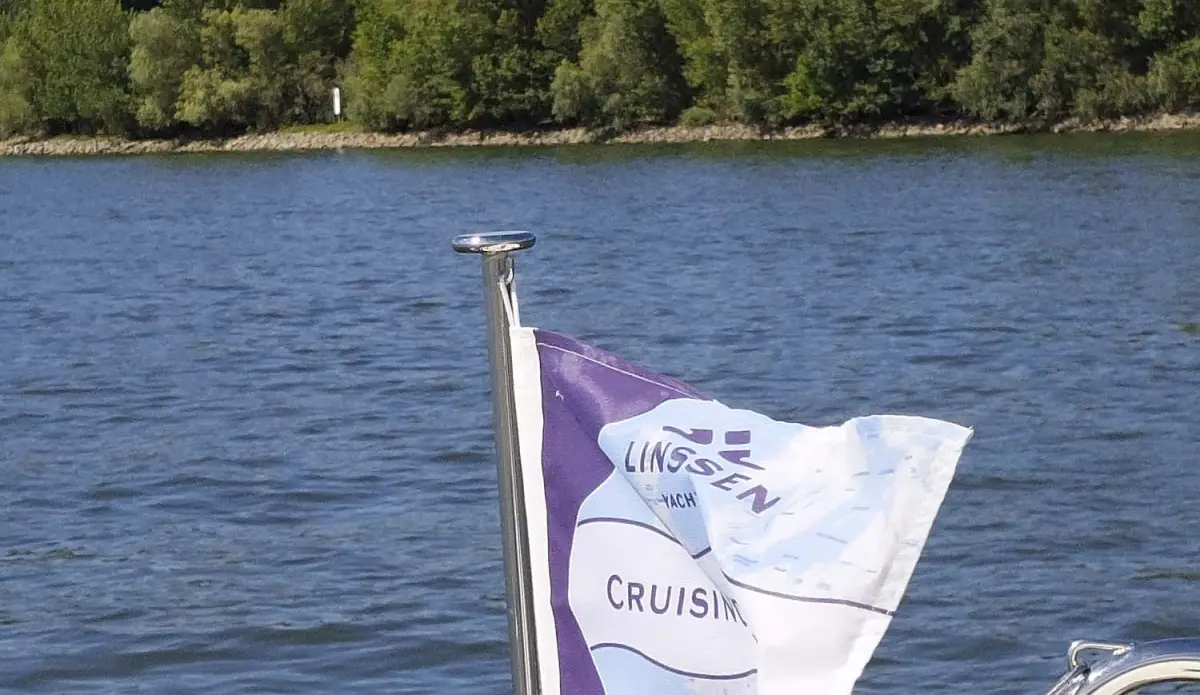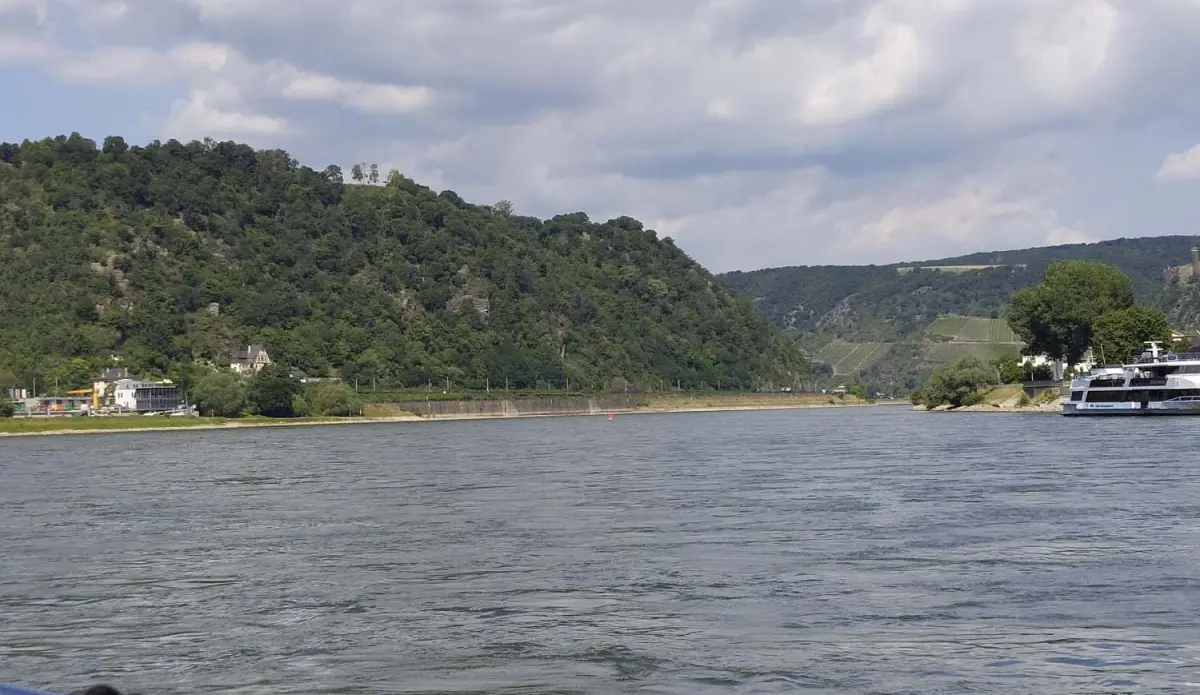Sailing on the Rhine is no more nerve-racking than driving with a caravan on the motorway.
- Details
Peter Weidner from Mannheim has been sailing for over 30 years. In 2013, he and his wife Sabine bought a Linssen Grand Sturdy 40.9 Sedan motor yacht. It became their second home, which they used to make extended tours of the French canals and other European waterways. Speaking from experience, Peter explains why sailing on the Rhine is no more dangerous or challenging than sailing on other rivers, contrary to what many boaters wrongly believe. Peter: “If you are properly prepared and steer clear of any commercial shipping, nothing can happen.”


Peter worked in a German bank for a long time and his wife was a physiotherapist. In 2010, they started a delicatessen business in Mannheim selling products from the south of France, Provence in particular. However, as a result of the coronavirus restrictions, they decided to close the business after ten years. Since then, they’ve been sailing on their Linssen yacht even more. Peter laughs: “We haven’t retired yet, but we’re practising for it now.”
Tool trolley
Peter had a nice anecdote about the purchase of their 40.9 sedan: “We had our first experience of a Linssen motor yacht during a sailing holiday in Zeeland, when we chartered a yacht from Linssen Boating Holidays. We liked it so much that we stopped at Linssen Yachts in Maasbracht on the way back home. Ed Cuijpers gave us some very good advice that day. He accompanied us into the production hall and showed us a 40.9 Sedan which was under construction. We chose this model as it met all our requirements. My father-in-law was also with us. He didn’t actually have to see the boat but he did have a look at the first tool trolley he came across in the production hall. When he pulled open one of the drawers and saw how neatly and cleanly the tools were arranged, he said: you can buy a yacht here with confidence.”
The Rhine is an autobahn
With his years of experience, Peter could almost write a book about sailing on the Rhine. He also regularly talks to yacht owners who are reluctant to venture on to this busy river, whereas Peter considers sailing on the Rhine no more dangerous than sailing on other rivers. Peter: “Of course, the Rhine is heavily used by commercial shipping and that puts boaters off. But if someone is wondering if it’s possible to sail on the Rhine on a slow displacement yacht, I would always ask a counter-question: could you drive a car and caravan on the motorway? On the Rhine, you are the one who is going slowly and being overtaken by commercial shipping. That’s the situation and you have to accept it, just like when you’re on the motorway with your caravan being overtaken by trucks. Moreover, you don’t drive all over the road with your caravan. You keep right wherever possible. It’s no different on the Rhine. And when a traffic jam occurs, you automatically slow down on the motorway. You also adjust your speed on the Rhine.”
Downstream or upstream
If you sail downstream from Basel to Rotterdam on a steel displacement motor yacht, things will go somewhat faster and you can reasonably keep up with the commercial shipping. Peter: “You will be sailing at an average speed of 15 km/h. Upstream is a different story, however. Say the Rhine is flowing at a speed of 5 km an hour and you are travelling at 10 km an hour. In reality, you will then be moving ahead at a speed of 5 km. This often makes boaters uneasy as commercial shipping is passing by at speeds of up to 20 km an hour. My advice is: just stay calm and keep right when you’re being overtaken. Or even better... plan your holiday as a round trip so that you can sail home down the Rhine.”
Suction effect
Don’t get put off by stories of high waves on the Rhine. Peter: “You can’t rule out the possibility that your yacht will start rocking. That is the charm of sailing. It may be a good idea to stow away specific items likely to fall over before you go up the Rhine, but there are really no five-metre high waves. However, there may be a powerful current which could exert a suction effect. So if you’re too close to a barge, you’ll be sucked in. You should therefore always keep a distance of at least ten metres. If you always keep right alongside the buoys, absolutely nothing will happen.
Sailing licence
Another important tip from Peter is to make sure you have the right papers with you when sailing on the Rhine. Peter: “Boats of 5 HP or more and up to 15 metres in length require you to have a sport boat sailing licence for inland waterways with you. If your yacht exceeds 15 metres (up to 25 metres), you have to be in possession of a Sport Patent in order to sail on the Rhine. The river police monitor this strictly. If you can’t show the right papers, your yacht will soon be chained up. International vessels also have to have a VAT certificate with them.
Give commercial shipping space
The success of a cruise on the Rhine depends on good preparation. From Mannheim to Cologne, for example, you don’t just sail away. The comparison with driving a car applies in this case as well. Peter: “When you go on holiday, you probably have a checklist of points that you run through before you leave. Another point to be added to the preparation, or rather awareness, is as follows: accept commercial shipping and give it space. They work under time pressure and may be stressed about getting from A to B. We boaters have all the time in the world.”
Many possibilities
Even without all the sights you encounter along the way, the Rhine is well worth a cruise. Along a total length of 900 kilometres, the landscape varies enormously. One moment, you’re sailing past an industrial area and the next you’re passing a city or looking out on to vineyards or unspoiled countryside. Peter: “The Rhine offers many possibilities. My wife and I always find the round trips very interesting. We live in Mannheim and sail downstream from there to Koblenz, turn towards the Moselle, where we have various options for returning to the Rhine through France and sailing home again downstream. But our cruises on the Upper Rhine (from Basel to Bingen) or the Middle Rhine (from Bingen to Bonn) also boast impressive landscape along the way. In the area from Iffezheim to Bingen in particular, there are a lot of tributaries of the Old Rhine that can tempt you to drop anchor and have a swim. The clubs there are situated in the middle of the countryside. We can thoroughly recommend these and other routes to anyone.”
Sailing on the Rhine? How to be well prepared
- Study in advance your cruising route and important information on marinas, locks, water levels, etc.
- Make sure you have the right manuals and navigation charts. And of course the right papers.
- Memorise or note down the meaning of special buoys, e.g. to indicate when a fairway splits.
- Always keep right and watch out for the blue signs on commercial vessels. This sign means that the vessels pass each other starboard to starboard. As a boater you don’t have to obey these signs, but it’s better if you do.
- Get your anchor ready.
- Don’t sail at night or in poor visibility.
- Don’t underestimate the speed of commercial shipping. Commercial vessels achieve speeds of 20 to 25 kilometres an hour travelling downstream and 15 to 20 kilometres an hour upstream.
- Stay behind commercial shipping so you’ll be sure you won’t get into difficulties. Do keep a safe distance (at least 10 metres). That way you’ll get the best out of the Rhine.
- If you have a VHF radio on board and are in possession of the appropriate certificate, listen in to channel 10.
- Do not sail upstream when water levels are high (Hochwassermarke I), as the current in the Rhine will then be too strong in some places.
- Follow the latest shipping news on www.elwis.de.
Beautiful cruising routes and round trips on the Rhine
Cruising routes
- At Mulhouse, head for the Rhine-Rhône Canal and the Mediterranean.
- At Strasbourg, enter the Rhine-Marne Canal heading for France, Belgium and the Netherlands.
- At Mannheim, enter the Neckar, proceed until after Stuttgart and then head for Plochingen.
- At Mainz, enter the Main heading towards the Black Sea and travel via Turkey, Greece, Italy and France to the Rhône and back.
- At Koblenz, enter the Moselle heading for France, Belgium and the Netherlands.
- At Duisburg, enter the Rhine-Herne Canal heading for Berlin, Hamburg, Bremen, the Baltic Sea and the North Sea.
- At Nijmegen, enter the Meuse-Waal Canal heading for Belgium, France and Germany.
- At Tiel, enter the Amsterdam-Rhine Canal and head for Amsterdam. There are many branches in the Netherlands, useful for planning round trips..
Round trips
- Meuse, Rhine-Marne Canal, Moselle. Then either enter the Rhine at Koblenz and back or enter the Rhine at Strasbourg and back.
- Rhine to Mulhouse, Rhine-Rhône Canal to the Saone, enter the Rhône heading for Marseille or Bordeaux.
- Rhine as far as Koblenz and enter the Moselle, then via the Vosges Canal to the Saone and via the Rhine-Rhône Canal to the Rhine
- At Mainz, enter the Main, Main-Danube Canal, Black Sea, Bosphorus, Greece, Italy, France, then enter the Rhône at Marseille and head north to Germany, the Netherlands or Belgium.
Sailing on the river Rhine with a Linssen motor yacht







_1200x695.webp)
_1200x695.webp)

_1200x695.webp)
_1200x695.webp)












